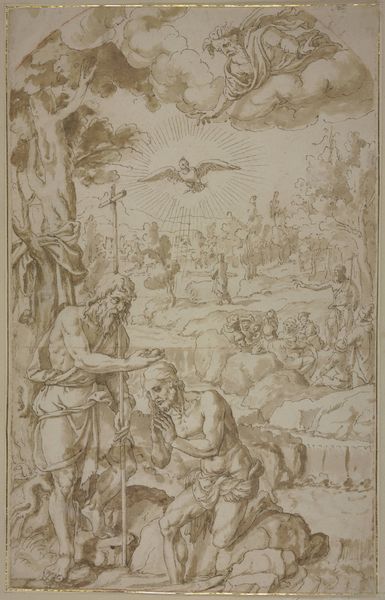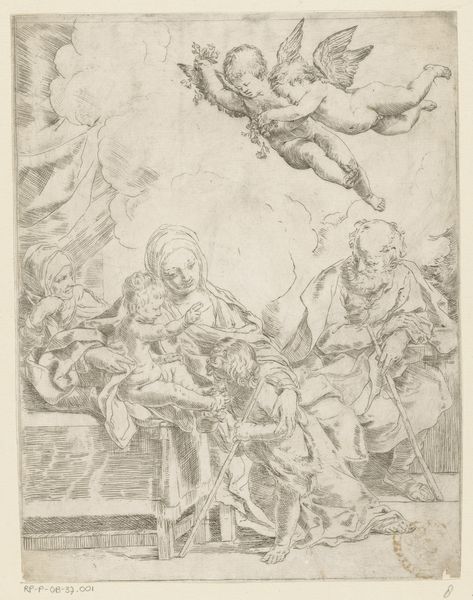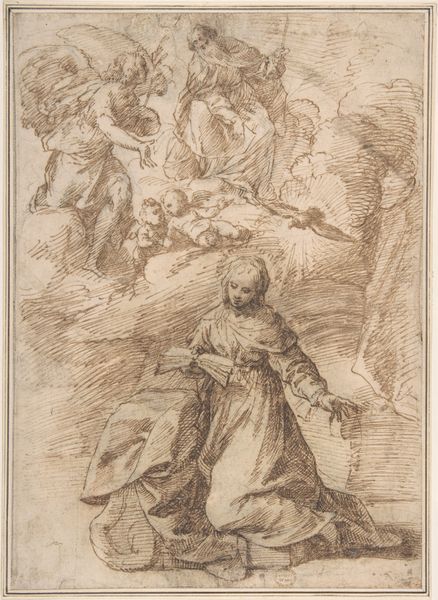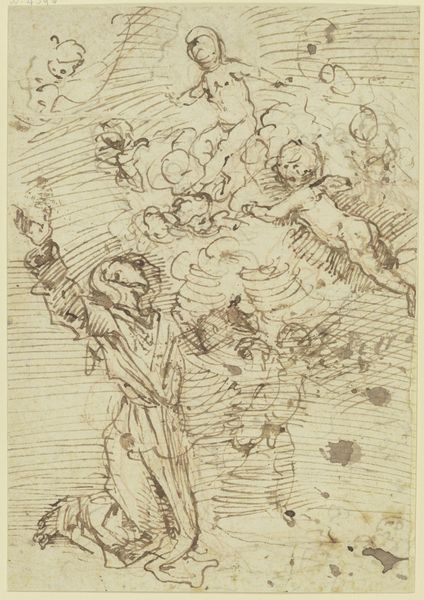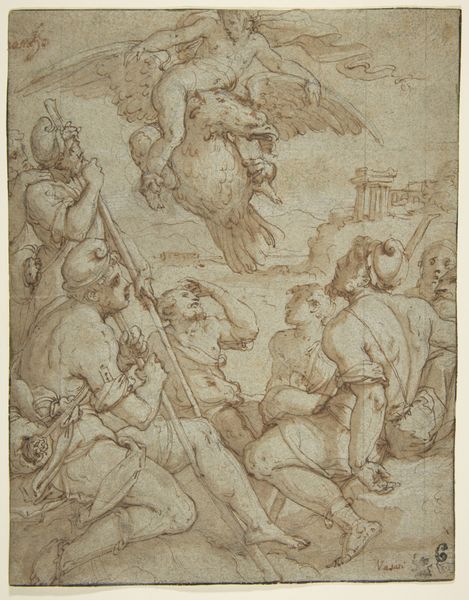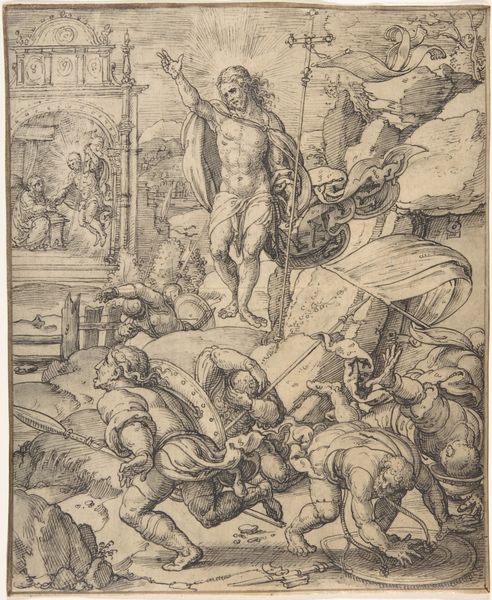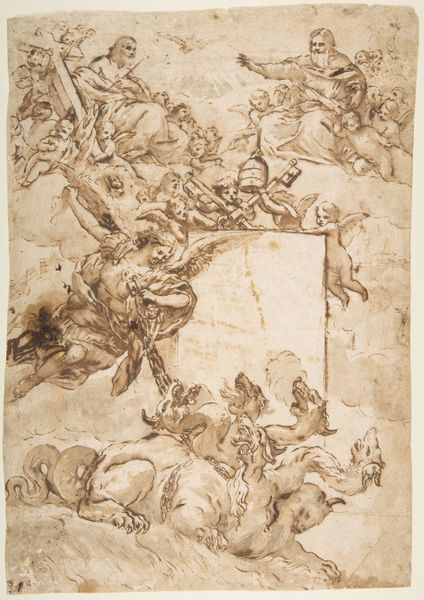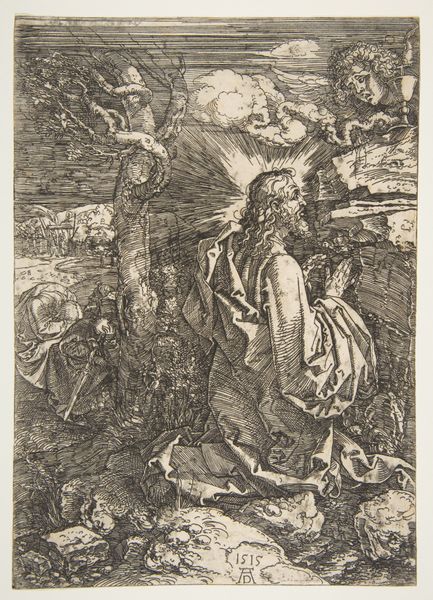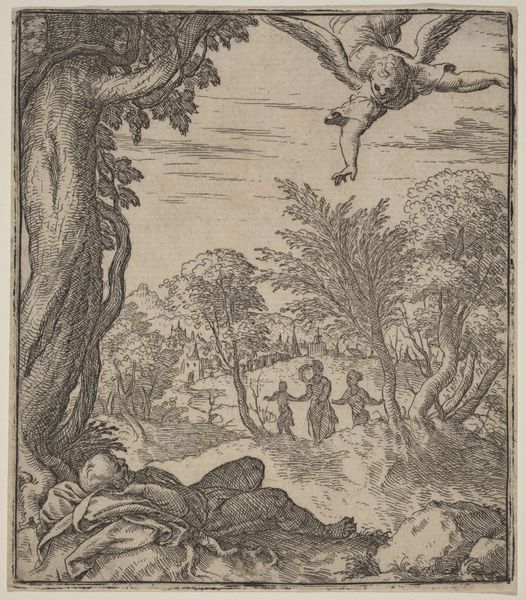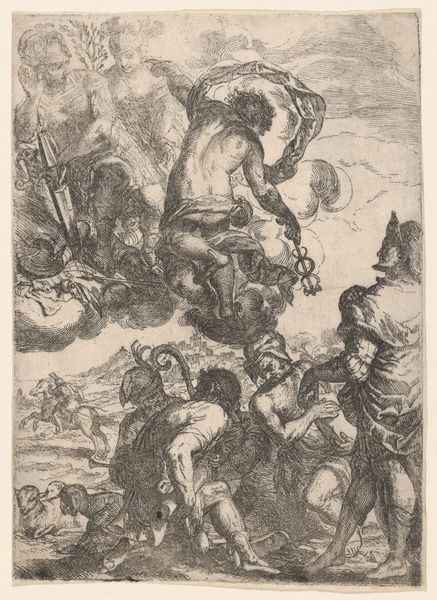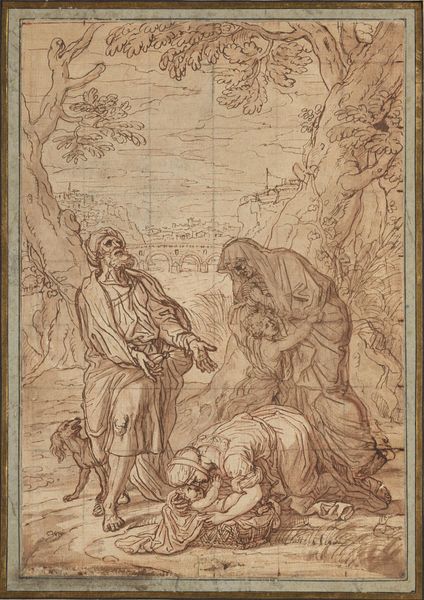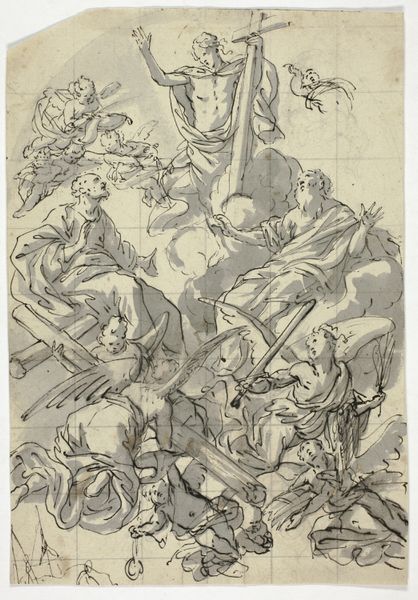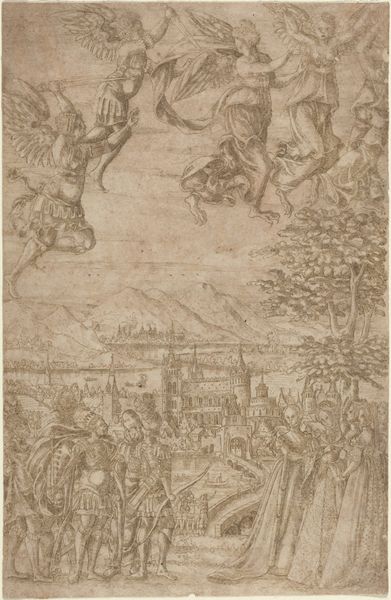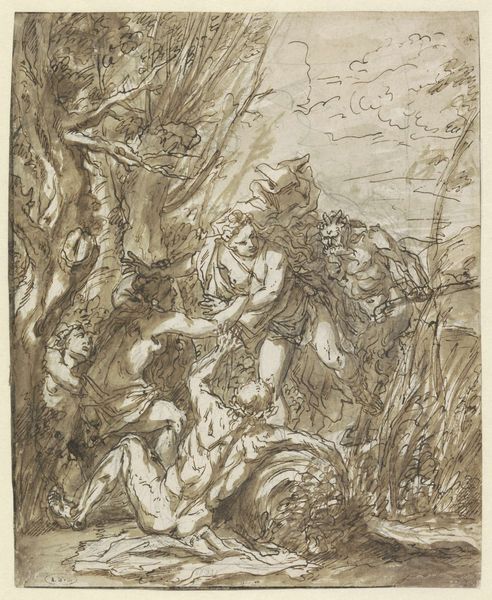
drawing, print, ink
#
drawing
#
ink drawing
#
baroque
#
ink painting
# print
#
pen sketch
#
pencil sketch
#
landscape
#
bird
#
mannerism
#
figuration
#
11_renaissance
#
ink
#
men
#
history-painting
Dimensions: 8-11/16 x 6-7/8 in. (22 x 17.45 cm)
Copyright: Public Domain
Curator: This ink drawing, believed to have been created sometime between 1600 and 1700, depicts Romulus Receiving the Augury. It's currently housed at the Metropolitan Museum of Art. Editor: The energy is palpable! All these swirling lines, it's like the whole scene is caught in a whirlwind of destiny. You've got the sun bursting through, angels fluttering about... I mean, someone's about to get a serious promotion! Curator: Precisely. The artist masterfully employs the conventions of history painting to elevate Romulus’s legendary status, blending classical themes with baroque dynamism. Augury was, of course, a vital element in ancient Roman statecraft; observing the flight of birds was seen as a divine endorsement. Editor: It almost looks like a fever dream, doesn’t it? The details feel a bit blurred and loose; all these characters mashed together at the bottom remind me of the crowded dance floor during a particularly sweaty rock concert. And, those wolves in the background… quite unnerving. Curator: This blurring, as you call it, likely reflects Mannerist influences. We see crowded compositions and stylized figures alongside a keen interest in linear perspective, quite typical of artists of the time grappling with the legacies of the High Renaissance. Also the prominence of mythological figures was part of the effort to promote a certain view of history in art during that era. Editor: Hmm, interesting. I hadn't really noticed that much depth but can see now you point it out. To me it is more just raw feeling: powerful, overwhelming... a bit frantic, maybe? The choice of ink heightens this intensity, right? Curator: Indeed. The relative immediacy and affordability of ink would allow an artist to quickly produce multiple preparatory studies, aiding in wider dissemination, or use it in smaller, less formal settings outside the larger institutions. In these venues imagery related to Roman antiquity and power would appeal to particular educated elites of the era, in competition for prestige and patronage. Editor: It's like they’re wrestling with fate itself! Though it's not exactly how I picture the founding of Rome, more chaotic than heroic, this is awesome in the true meaning of that abused word. Curator: I find this piece reveals how historical narratives were constructed and promoted in 17th-century art, intertwining artistic style with socio-political ambition. Editor: It feels surprisingly intimate, despite the grand subject matter. This drawing leaves me wanting to dive headfirst into Roman history...or at least watch a gladiator movie.
Comments
No comments
Be the first to comment and join the conversation on the ultimate creative platform.
